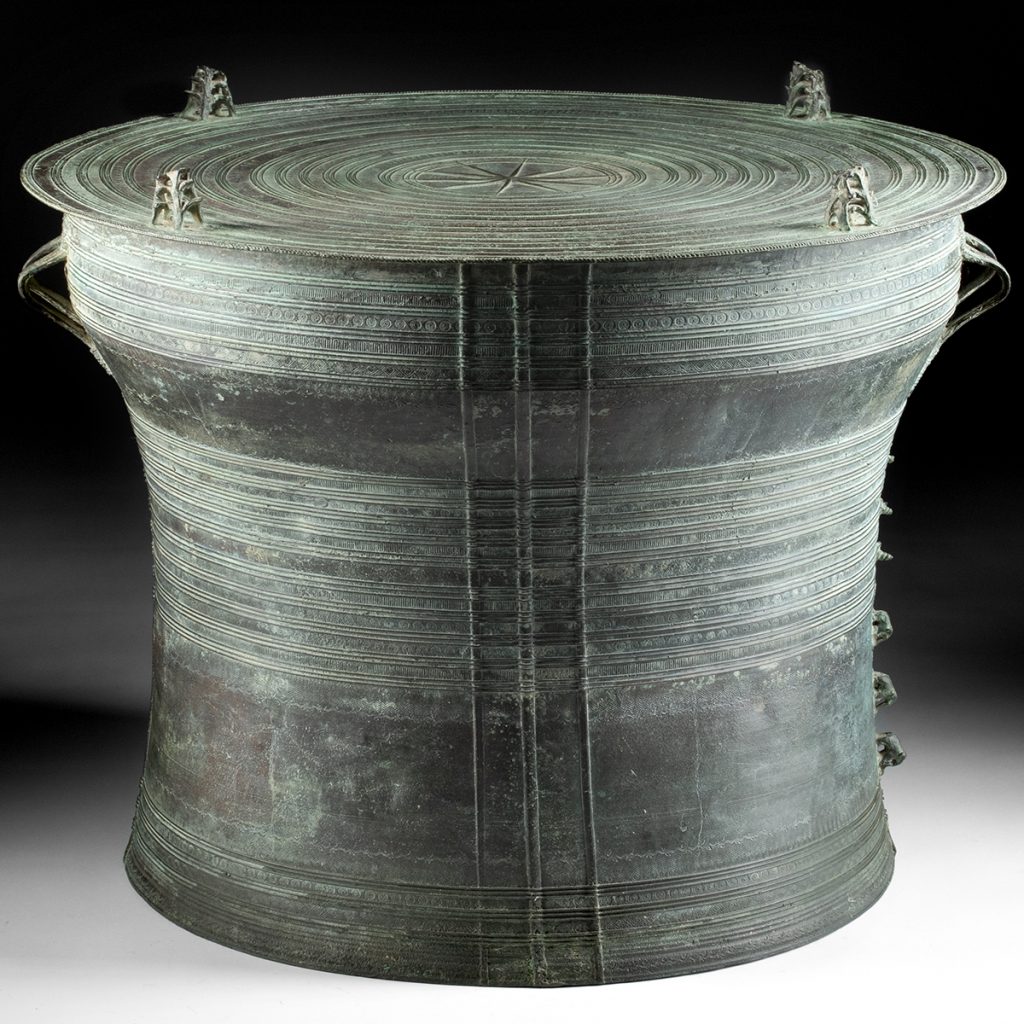Rain drums, with their resonant and percussive qualities, are unique instruments that have cultural and historical significance. These drums, often shaped like a shallow bowl or inverted bell, feature intricate patterns on the surface. Originating from Southeast Asia, particularly the Dong Son culture, rain drums have transcended their original ceremonial use and found a place in both traditional practices and contemporary settings.

Design and Craftsmanship: Rain drums are characterized by their distinctive design. Typically made from bronze or other metals, these drums feature a flat, circular surface adorned with intricate patterns, often depicting scenes of nature, animals, or cultural symbols. The raised patterns create a textured surface, and the central boss, or knob, serves as the focal point. The design not only contributes to the drum’s aesthetics but also influences its sound.
Cultural Significance: Rain drums hold cultural significance, particularly in Southeast Asian societies. Historically, they were used in ceremonial and religious contexts. The name “rain drum” is derived from the belief that the drum’s resonant sound resembles the patter of raindrops, connecting the instrument to agricultural rituals and invoking a sense of abundance.
Sound and Symbolism: The sound produced by rain drums is distinctive—deep, resonant, and melodic. Striking the surface with mallets or hands creates a reverberating tone that varies depending on the drum’s size, thickness, and craftsmanship. In addition to their auditory impact, rain drums carry symbolic meaning, often representing fertility, prosperity, and the cyclical nature of life.
Modern Application: While rain drums have historical roots, their use has evolved beyond ceremonial contexts. Today, these drums are appreciated for their artistic and musical value. In sound healing practices, rain drums can be utilized for their grounding and rhythmic qualities. The deep tones and the tactile experience of playing the drum can contribute to a sense of connection with nature and foster a meditative state.
Sound Healing Applications:
- Grounding and Centering: The rhythmic and grounding qualities of rain drums make them suitable for practices that focus on grounding and centering individuals. The repetitive beats can help induce a state of presence and mindfulness.
- Meditation and Relaxation: Incorporating the resonant sounds of rain drums into meditation sessions can enhance the overall experience. The deep tones create a serene atmosphere conducive to relaxation and inner reflection.
- Ceremonial and Ritualistic: In some sound healing ceremonies, rain drums may be used to invoke a ceremonial or ritualistic ambiance. The symbolic associations of abundance and cyclical renewal align with themes of transformation and healing.
Rain drums, with their rich history and versatile applications, serve as both cultural artifacts and contemporary instruments in the world of sound healing. Their evocative soundscapes and symbolic resonance continue to captivate audiences, connecting them to the ancient rhythms and timeless symbolism embedded in these unique percussive instruments.